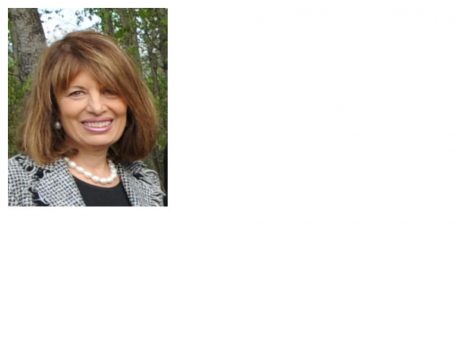There is an undeniable difference in performance on standardized tests and other academic achievements in the United States that correlates to student background – race, wealth, and socioeconomic class.
This difference in performance is referred to as the achievement gap.
The achievement gap is most noticeable when comparing students of different ethnicities and socioeconomic classes. Overall, white and Asian students in California outperform students from other ethnic backgrounds, while higher-income students outperform those from less affluent families. The suggested causes of the achievement gap range from a lack of funding for minority and low-income dominated schools to the idea that minority and low-income students have an extensive range of additional issues in their lives that hold them back.
Jackie Speier, US Congresswoman of California’s 14th district since 2013 and House Representative since 2008 believes that the causes of the achievement gap are rooted in societal issues that can bleed into the education system.
“I think it has a lot to do with poverty, and with the way we fund education. It has a lot to do with just a racial bias that exists. Students in poverty have 6,000 fewer learning hours than other students. How is that acceptable? In part, it happens because they are in low-income families where maybe both parents are working or if there’s a single parent, they’re working two jobs, and so there is no one there to help them with their education,” Speier said.
Amika Guillaume, the principal at the public charter school East Palo Alto Academy in the Sequoia Union High School District (SUHSD), has been working at schools with large minority and low-income populations throughout most of her career. Most students are from low-income households at her current school, and 99% of them are considered minorities. She described the challenges of getting low-income and minority parents involved and committed to their kids’ education.
“Sixty-Five percent [of students at East Palo Alto Academy] are the first in their family to go to high school,” Guillaume said. “If you think about my parent meetings, I have to empower my parents to understand the high school setting. I have to spend an amount of energy firing my families up and giving them the tools to understand.”
When it comes to how the achievement gap manifests itself among high school students, Principal Ralph Crame of Carlmont High School in the SUHSD, highlighted the importance of preparation and a support system coming into high school.
“Are they prepared? Do they have other factors, or can they focus on school? Some students can focus on school, and they don’t have to worry about anything because their parents are providing everything for them. They’re getting the support they need when others struggle because they don’t have the same structures and preparation. They transferred in from a different area where the education wasn’t as solid as some of the areas around here,” Crame said.
Connie Dominguez, a counselor at Carlmont and admissions reader for UC Davis, echoed Crame on this topic.
“We get students from Ravenswood [School District], and we get students from other middle schools that probably don’t have as many resources to prepare kids for high school. We’re having to do a lot of catching up for those kids. Our students of color tend to live in communities where they don’t have as many resources as some of the other students,” Dominguez said.
Much of East Palo Alto and East Menlo Park is served by the Ravenswood City K-8 School District, where most students are of Hispanic origin and low socioeconomic status.
Jenna Wachtel Pronovost, the Ravenswood Education Foundation’s Executive Director, pointed to a lack of funding as a significant reason students in her school district weren’t as consistently prepared for high school as neighboring, more affluent schools. She described an inability to retain good teachers due to funding woes as a significant cause of the gap.
“I think we need to pay teachers more in Ravenswood, which requires more funding. The average teacher in Ravenswood makes $30,000 less than the average teacher in Palo Alto, for example. This impacts a teacher’s ability to stay in Ravenswood, especially as they get older if they want to have a family, or just want to be able to buy a house someday,” Wachtel Pronovost said.
Guillaume also reiterated that a lack of ability to retain teachers is a major issue for schools in low-income areas.
“Just by working here and not on the other side of that fence, which is Ravenswood, I make 20-25% more in salary. In addition to making more money, my benefits are 10 times better than before. That’s life-changing. And what that means is the turnover here in this school is significantly lower than my neighbors in Ravenswood,” Guillaume said.
This gap in funding between schools in different areas occurs primarily due to a dependency on many schools’ local funds. The average school in California receives more than 30% of their funds from local sources, most commonly from property taxes and fundraising from the school district’s communities. However, for affluent school districts such as the Sequoia Union High School District, upwards of 80% of funds can come from local sources.
The state tries to mitigate this problem by providing funds on a per-student basis, with students classified as ‘high need’ receiving more funds than others. This is implemented through a Local Control Funding Formula (LCFF) established in 2013. Despite this attempt to provide more state funds to schools with more ‘high need’ students, California still has major funding disparities. Schools in high-income areas have vastly more resources than those in low-income areas.
Wachtel Pronovost argued that the states weren’t doing enough to mitigate this disparity in funding sources.
“I don’t think the state and federal [government] are doing enough to mitigate that, and I think it has a lot to do with the different sort of ways funding is allocated. It also has to do with the amount of private funds that families can provide themselves and that parents, of course, want their kids to have the best educational experience possible and so they’re more willing to give to their own child’s school,” Wachtel Pronovost said.
Guillaume also echoes Wachtel Pronovost’s point that fundraising can be a great income source for schools in high-income areas and can vary drastically between schools.
“As a former principal in the Ravenswood [School] District in East Palo Alto, I was thrilled if I raised $2,000. It’s very hard, whereas now as part of the Sequoia [Union High School] District and the Stanford affiliated foundation that helps us with our school, we have raised about $1.5 million every year,” Guillaume said.
Guillaume attributes funding as a reason her school can vastly outperform state averages in low-income students’ graduation rates.
“We have tutors, we have office hours, we have small class sizes, and we’ve got three different ways to do credit recovery. So you are going to take these classes high hell or high water and we’re gonna get you through them. And if we don’t get you through them, we’re going to take them again,” Guillaume said.
Guillaume’s school, East Palo Alto Academy, and other schools that have received generous funding have been able to take action by providing resources to disadvantaged students to reduce the achievement gap.
“The district has decided to put a lot of resources towards helping all students, whether it’s mental health, support services, or the academic tutoring center. I think that we’ve been putting a lot more resources at all our sites to help students, and I think that’s had a great impact on the achievement gap,” Dominguez said.
Crame noted the benefits of funding for reducing the achievement gap.
“When you have a healthier budget, you can offer a higher salary for teachers. Offering funding that lowers class size definitely will also help. After school funding that offers technology students can take home, funding offers programs to support like tutoring programs and other support programs or other support classes. And just funding to offer electives that keep students connected to school, I think that is important,” Crame said.
The idea that better-funded schools can help students from lower socioeconomic backgrounds contributes to busing. Busing is the practice of transporting students to schools outside of their local area to desegregate schools and provide minority and low-income students with a better educational experience. Busing is still in practice throughout much of the United States, including California and the Bay Area.
However, many see flaws in busing students to schools outside their neighborhoods.
“If you have to travel a long distance to go to a high school that is a higher-performing school, you might not feel connected to that school because it’s not in your neighborhood,” Crame said.
Wachtel Pronovost also argued against the practice of busing.
“We want every child, no matter where they’re born, to have a high-quality educational experience. I don’t think it’s right that kids have to leave their neighborhood to receive that, and I think busing is an attempt to address that, but it’s not a purely equitable solution,” Wachtel Pronovost said.
When asked about the most important issue facing California’s public schools, a statewide survey from the Public Policy Institute of California displayed lack of funding as the second most pressing issue for the education system in California according to the respondents of the poll, with the first being Covid-19 & Distance Learning. Despite a desire for more funds appearing as one of the top issues, many are unsure of the specific reforms they believe should occur, despite recognizing a gap in funds between schools.
Crame is one of the many people aware of the disparity between different schools’ fundings.
“I think that there is a disparity depending on where you live, and the school you go to will have more funding depending on the property tax dollars in that area. I don’t know how to change it,” Crame said
Others like Wachtel Pronovost are more concrete in their ideas for reform.
“I think we need to look at how we fund schools and look at it through an equity lens instead of an equality lens. Look at how we can get more funds to students and families who need it more as opposed to trying to get an equal level across school districts,” Wachtel Pronovost said.
Sophia Layne, a school board member in the Cabrillo Unified School District in Half Moon Bay argued for reforming the funding formula.
“A lot of it needs to happen at the state level in terms of funding formulas that are more equitable and really can support districts based on their needs,” Layne said.
Speier believes that a top priority for reformers should be making sure funds for education are spent wisely.
“We’ve got to make sure that the dollars are getting to the classrooms. I think that we got to reinstate programs that energize kids. You learn more sometimes by going on a field trip than you do reading a book, yet we cut so much of that out of the experience,” Speier said.

We’ve got to make sure that the dollars are getting to the classrooms. I think that we got to reinstate programs that energize kids. You learn more sometimes by going on a field trip than you do reading a book, yet we cut so much of that out of the experience.
— Rep. Jackie Speier
Dominguez believes that a sizeable societal shift must occur to reduce the achievement gap.
“The default is everybody should go to college, right? That’s if they want to succeed in this competitive market. We need a big cultural shift in thinking that not everybody needs to go to college. Just because you don’t go doesn’t mean you’re not going to be successful. Achievement needs to be redefined so that we can fix the achievement gap,” Dominguez said.
She is also an advocate for reducing stress for high schoolers and fostering a better sense of community.
“If we get rid of AP, I think it’ll just lessen some of the stress of doing more than what you need to do and thinking that’s what the colleges want you to do. More importantly, then you diversify your classrooms. I would like to see a required class where everybody just gets to mix it up one more time before they go off into the real world,” Dominguez said.
Guillaume backed up what Dominguez said and added her thoughts on how she views diversity in school classrooms.
“Studies will show that when you have what is called a heterogeneous [diverse in character or content] grouping, everyone benefits. Discipline issues go down, and there is more of a harmonious feel among the students,” Guillaume said. “I also think there is a lot of value if I come from a privileged background to spend quality learning time with kids who aren’t as privileged because it gives me a better perspective on the world.”
Layne believes that one of the reasons so little changes in the education system is because people are resistant to change.
“I think the biggest political issue is between the status quo and inertia around doing things the way we’ve always done things. People feel like, alright, this is the best we can do. Others like myself might feel more like, is this how we’ve been doing and we can do better,'” Layne said.
Speier suggested the most effective way to bring about change is to be an active member of your community.
“I think the best way to change is to participate in the process, which is either run for office so that you can make a case and get elected and change it yourself or go to a school board meeting and make the case. The evidence is there, the data is there, so it’s just a matter of making sure reducing the achievement gap gets prioritized,” Speier said.



































Gary Kurtzman • Jan 20, 2021 at 9:01 am
What a well written article! I am very impressed by the breadth of interviews and the fluidity of writing. Income inequality, and the concomitant achievement gap, can feel intractable given their persistent widening, but a crucial step in solving these issues is shining a spotlight on them. Excellent job!